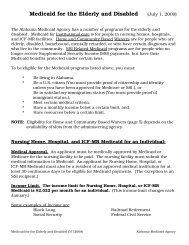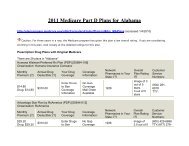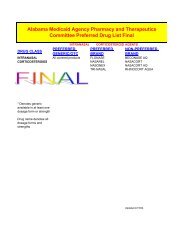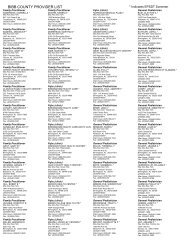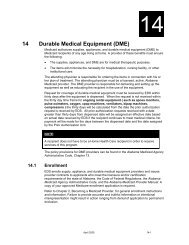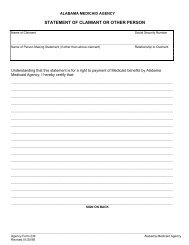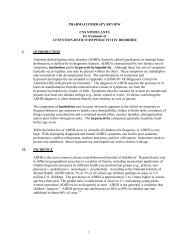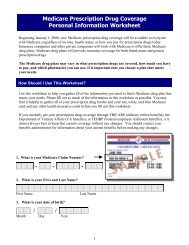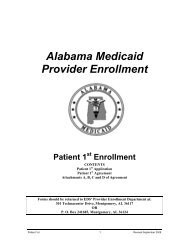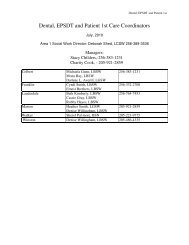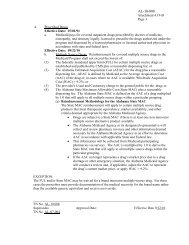Chapter 106 Targeted Case Management - Alabama Medicaid Agency
Chapter 106 Targeted Case Management - Alabama Medicaid Agency
Chapter 106 Targeted Case Management - Alabama Medicaid Agency
- No tags were found...
Create successful ePaper yourself
Turn your PDF publications into a flip-book with our unique Google optimized e-Paper software.
<strong>Targeted</strong> <strong>Case</strong> <strong>Management</strong> <strong>106</strong>NOTE:Consider current functioning problem areas of one-year duration or withsubstantial risk of over one year duration.Sensory ImpairedBlind recipients have no usable vision after the best possible correction. Theymust rely on tactile and auditory senses to obtain information.Partially sighted recipients have a visual acuity of 20/70 or less in the bettereye with the best possible correction. They also have a peripheral field sorestricted that it affects their ability to learn, or a progressive loss of visionwhich may in the future affect their ability to learn.Deaf recipients have a hearing impairment that is so severe that they areimpaired in processing linguistic information through hearing, with or withoutamplification. This impairment adversely affects educational performance.Blind multihandicapped recipients have a visual impairment (either blind orpartially sighted as defined above) and a concurring handicapping condition.Deaf multihandicapped recipients have a hearing impairment (deaf as definedabove) and a concurring handicapping condition.Deaf-blind recipients have both hearing and visual impairments. Thecombination of sensory impairments causes such severe communication andother developmental and educational problems that the recipient cannot beproperly accommodated in the educational programs offered by the <strong>Alabama</strong>School for the Blind or the <strong>Alabama</strong> School for the Deaf.Disabling Health Condition(s)Recipients are eligible for <strong>Targeted</strong> <strong>Case</strong> <strong>Management</strong> services if they havethe following disabling conditions, which are severe, chronic, and physical innature and require extensive medical and habilitative/rehabilitative services.• Central nervous system dysraphic states such as spina bifida,hydranencephaly, and encephalocele• Cranio-facial anomalies such as cleft lip and palate, Apert's syndrome,and Crouzon's syndrome• Pulmonary conditions such as cystic fibrosis• Neuro-muscular conditions such as cerebral palsy, arthrogryposis, andjuvenile rheumatoid arthritis• Seizure disorders such as those poorly responsive to anticonvulsanttherapy and those of mixed seizure type• Hematologic/immunologic disorders such as hemophilia, sickle celldisease, aplastic anemia, and agammaglobulinemia• Heart conditions such as aortic coarctation, and transposition of the greatvessels• Urologic conditions such as extrophy of bladder• Gastrointestinal conditions such as Hirschsprung's Disease, omphalocele,and gastroschisisJanuary 2011 <strong>106</strong>-9




